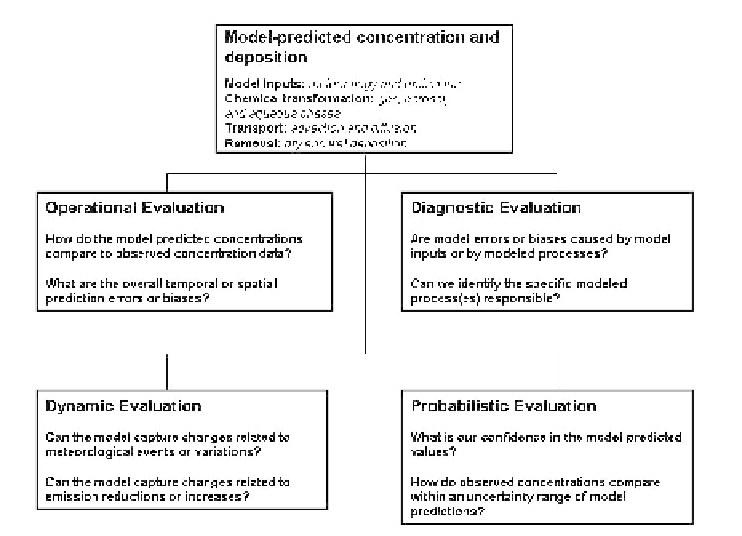Environmental Engineering Reference
In-Depth Information
the best methods for assessing the performance of regional-scale AQMs. Motivated
by discussions at a model evaluation Workshop in 2007, sponsored by U.S. EPA
and the American Meteorological Society (AMS), a new framework for regional-
scale air quality model evaluation is introduced.
2. Model Evaluation Framework
Fig. 1.
The framework components of air quality model evaluation
As shown in
Fig. 1,
the framework consists of four components for regional-
scale air quality model evaluation.
Operational Evaluation
characterizes how
well model predictions compare to observations for specific time periods and
conditions. Key questions to consider as part of operational evaluation include:
(1) what statistical metrics and graphical depictions are most useful in assessing
air quality model performance? and (2) how can point measurements and volume-
averaged model predictions be reconciled in terms of spatial and temporal scales?
In
Diagnostic Evaluation,
we determine how the performance of the model could
be improved through complementary process-based analysis of modeled and
measured values. Specific model processes or data are evaluated with the goal of
attribution of model errors.
Figure 2
is an example of a diagnostic study that used
inverse modeling of ammonia (NH
3
) to update the emissions inventory used in the

